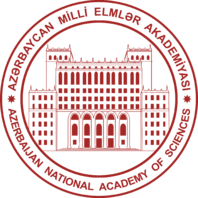Nature Museum
| Phone | ||
| Fax | ||
| Chief | ||
| Total number of employees | ||
| Basic activity directions |
Museum of Nature, established since 2003 under the Institute of Bioresources of the Nakhchivan Branch of the Academy of Sciences, is one of the cultural centers that visually represent the richness of the area. The museum aims to promote the diversity of our flora and fauna, including the conservation of rare and endangered species, the sense of native culture and the natural culture of the younger generation. At the entrance of the museum, rich with fossiled remains of various living things, skeletons, tools of ancient humans, nests of birds and other exhibits,there is a nook allocated for over 50 wheat hybrids and breeding varieties of the autonomous republic, specializing by its soil and climatic conditions. Another section that attracts attention here is medicinal plants, which differ in high medicinal properties of our flora. The museum exhibits oils derived from walnuts, almonds, bitter almonds, apricots and peaches. In this Section, 60 herbs with rich biological stocks in our flora are exhibited together with the appropriate combination. The museum also presents samples of fish species, especially Kur UzunBurun( 'long nosed', a species of sturgeon), Salmo truttafario, gambusia and others common in our water bodies and newly introduced into the fauna by scientific researchers 38 species of snakes and lizards spread in the territory of the Nakhchivan Autonomous Republic attract attention. The exhibit of another section of the museum is the rare species. The museum also exhibits the largest individuals of long-fingered crayfish and shrimp in the entire Caucasus, found in the Aras reservoir. Numerous exhibits related to invertebrates comprise the exposition of the next section of the museum. Here, an exhibition of various species of molluscs, Malacostraca, including groups of insects,beetles, butterflies, wild bees, arachnid and marine life gives an impression of the region's rich invertebrate fauna. In addition to displaying some exhibits in the museum, they have also been involved in research. Thus, experts conducting research on different groups of animals use the copies exhibited here as the initial material, complete descriptions and measurements. In this cultural center, which is always open to nature lovers, students studying at universities, and secondary school students, open classes are being organized in recent years, events are being held on various topics. Students and pupils are closely acquainted with the fauna and flora of the area and are provided with recommendations on the conservation of our rich natural resources and ecology. |
|
| Main scientific achievements | ||

 Elm TV
Elm TV
 Photo
Photo
 Video
Video